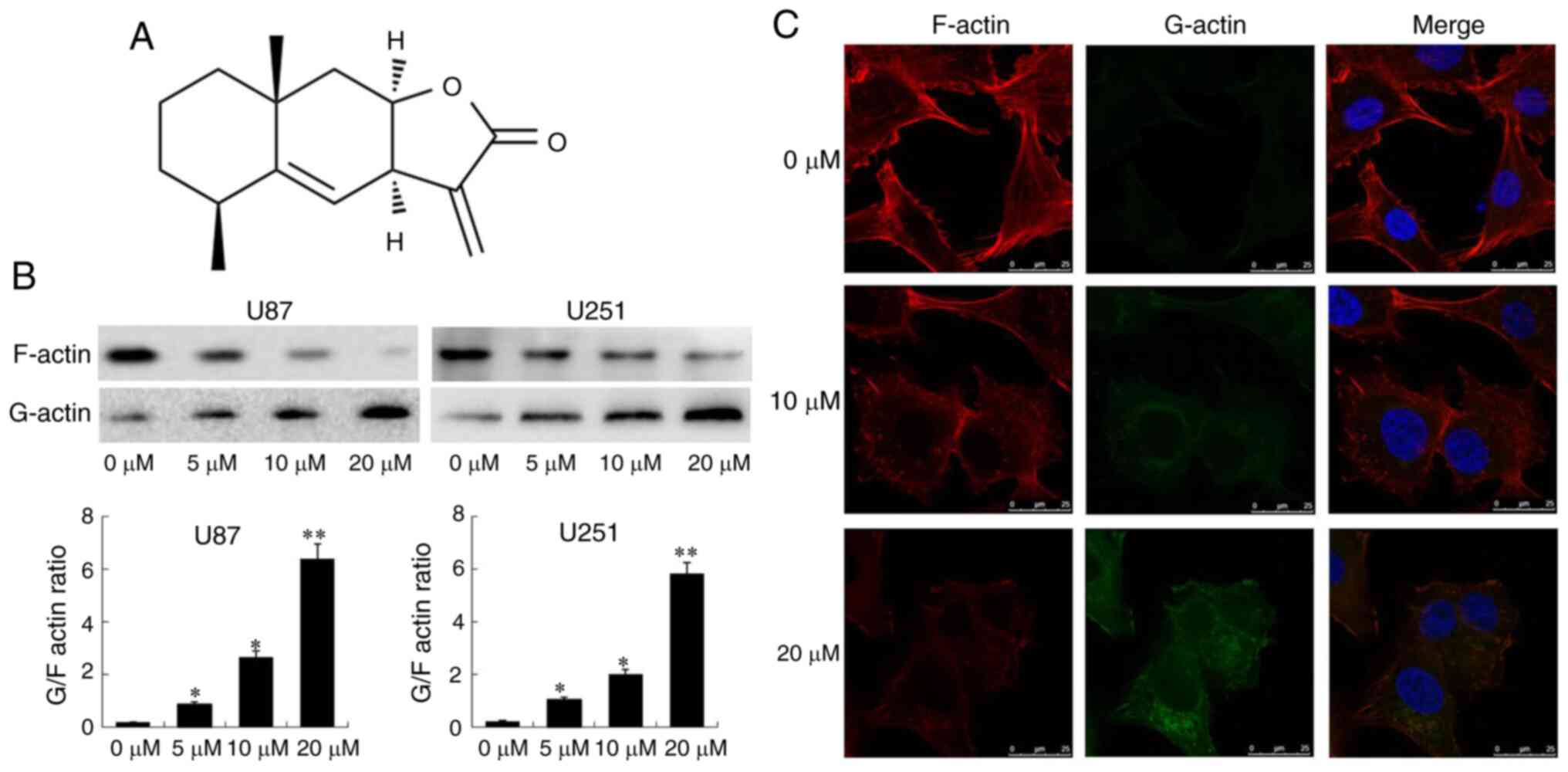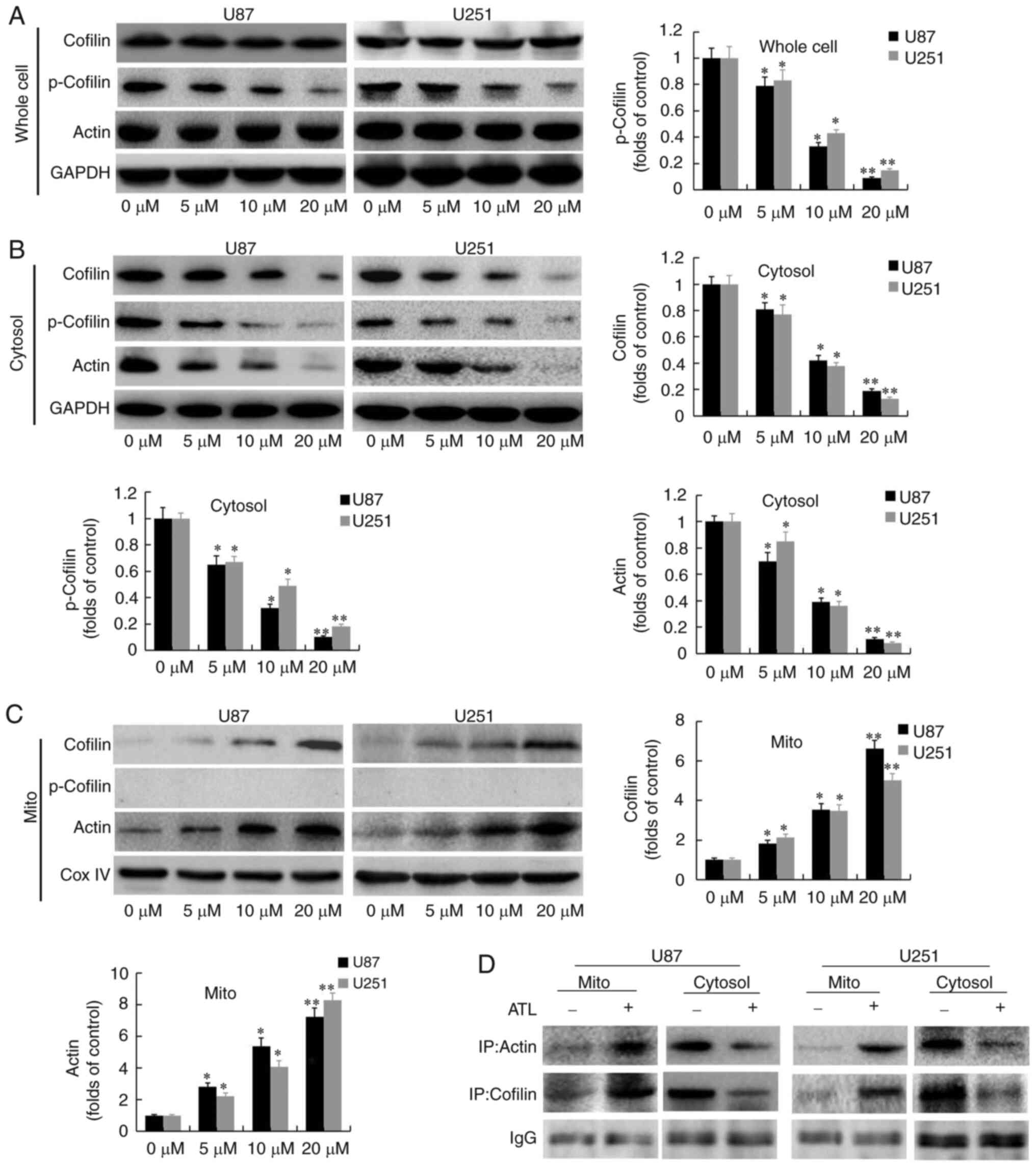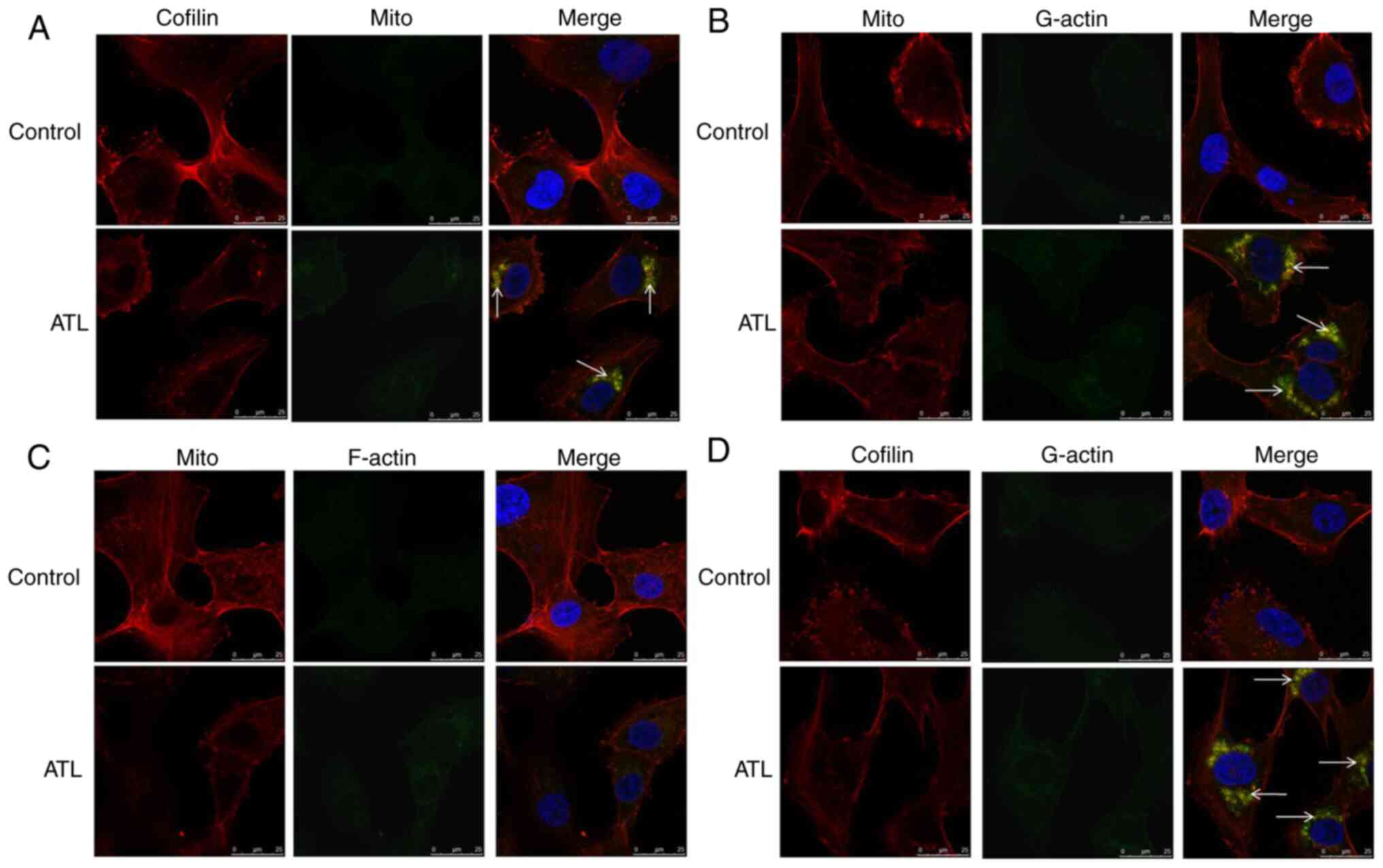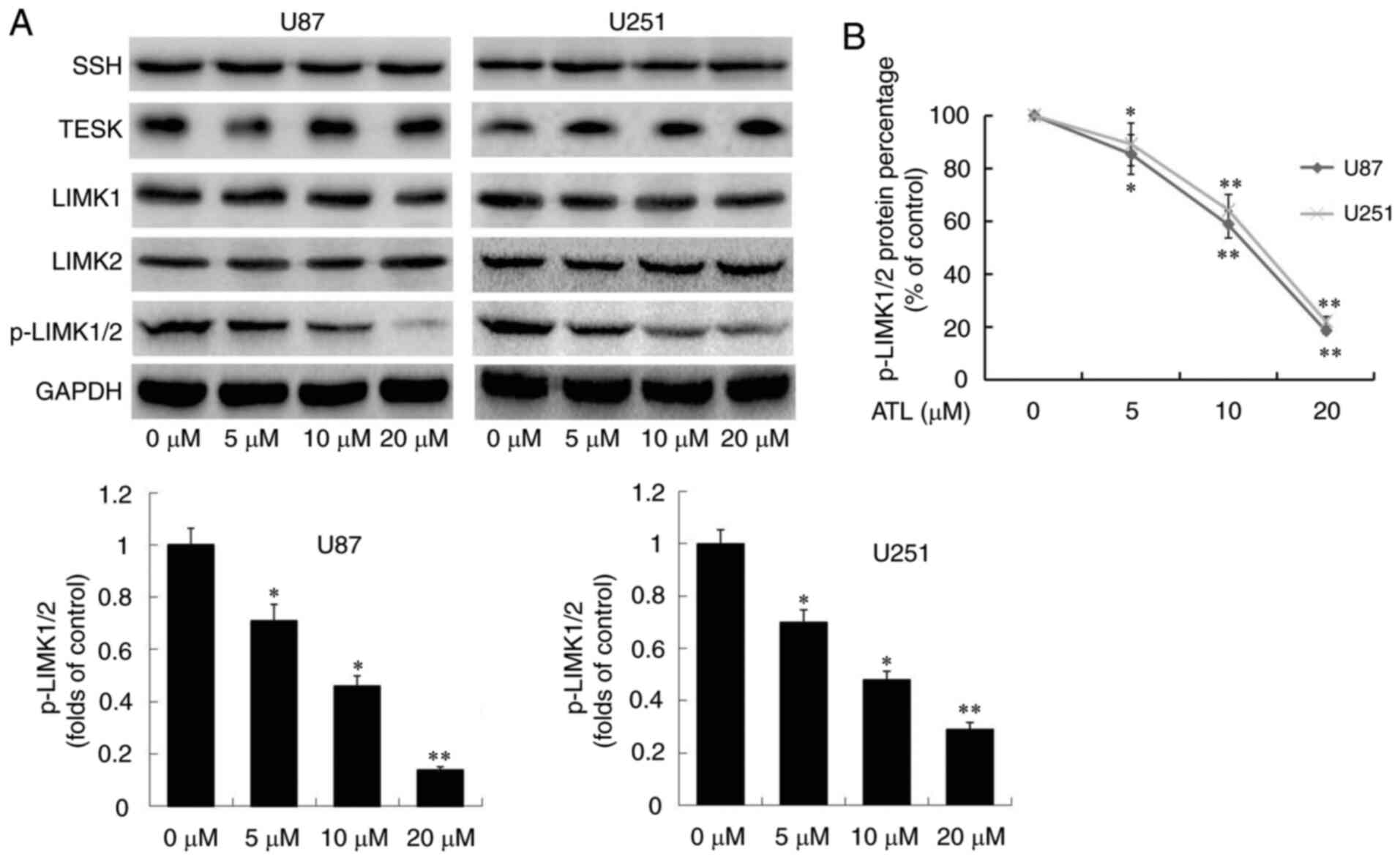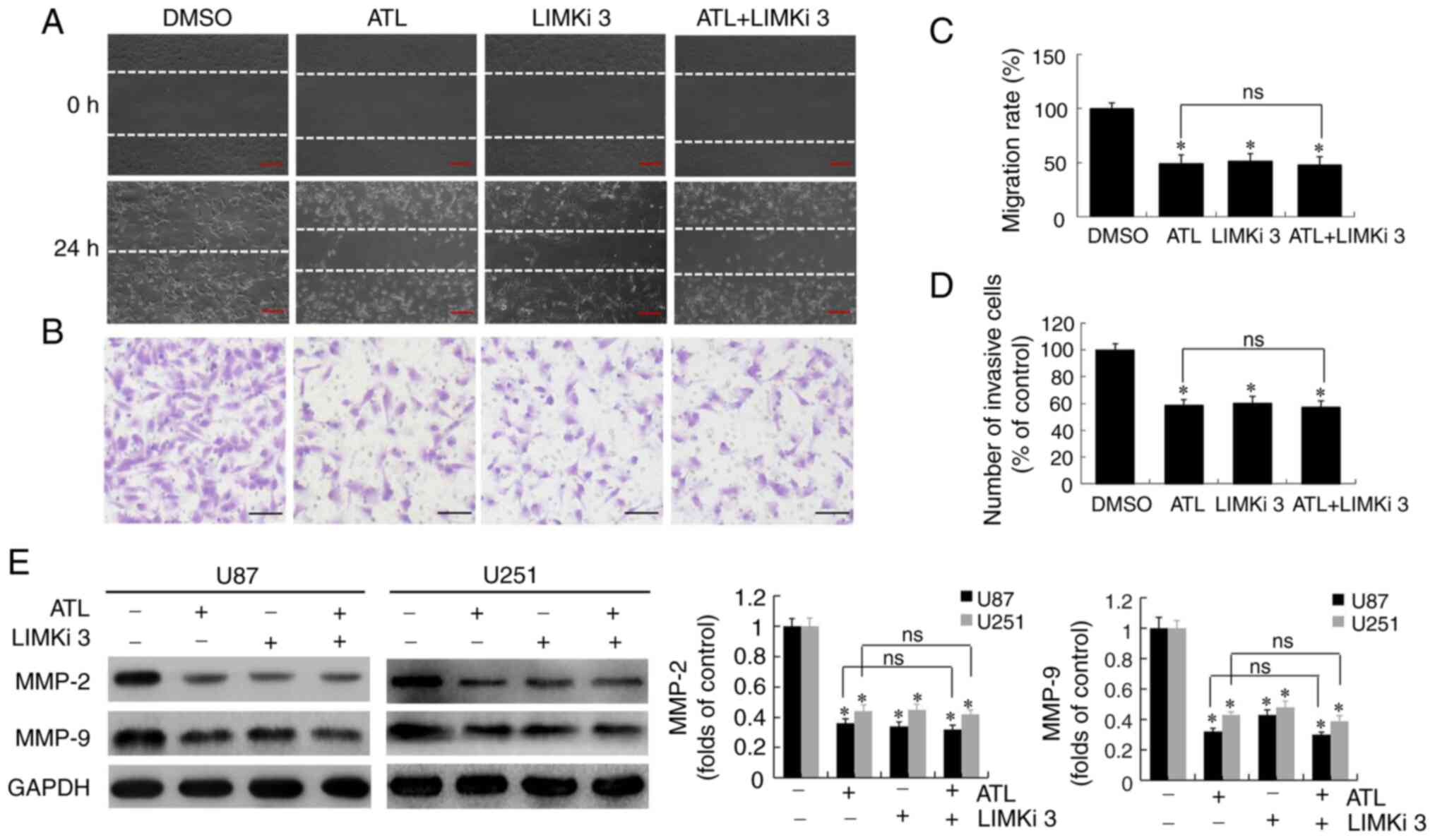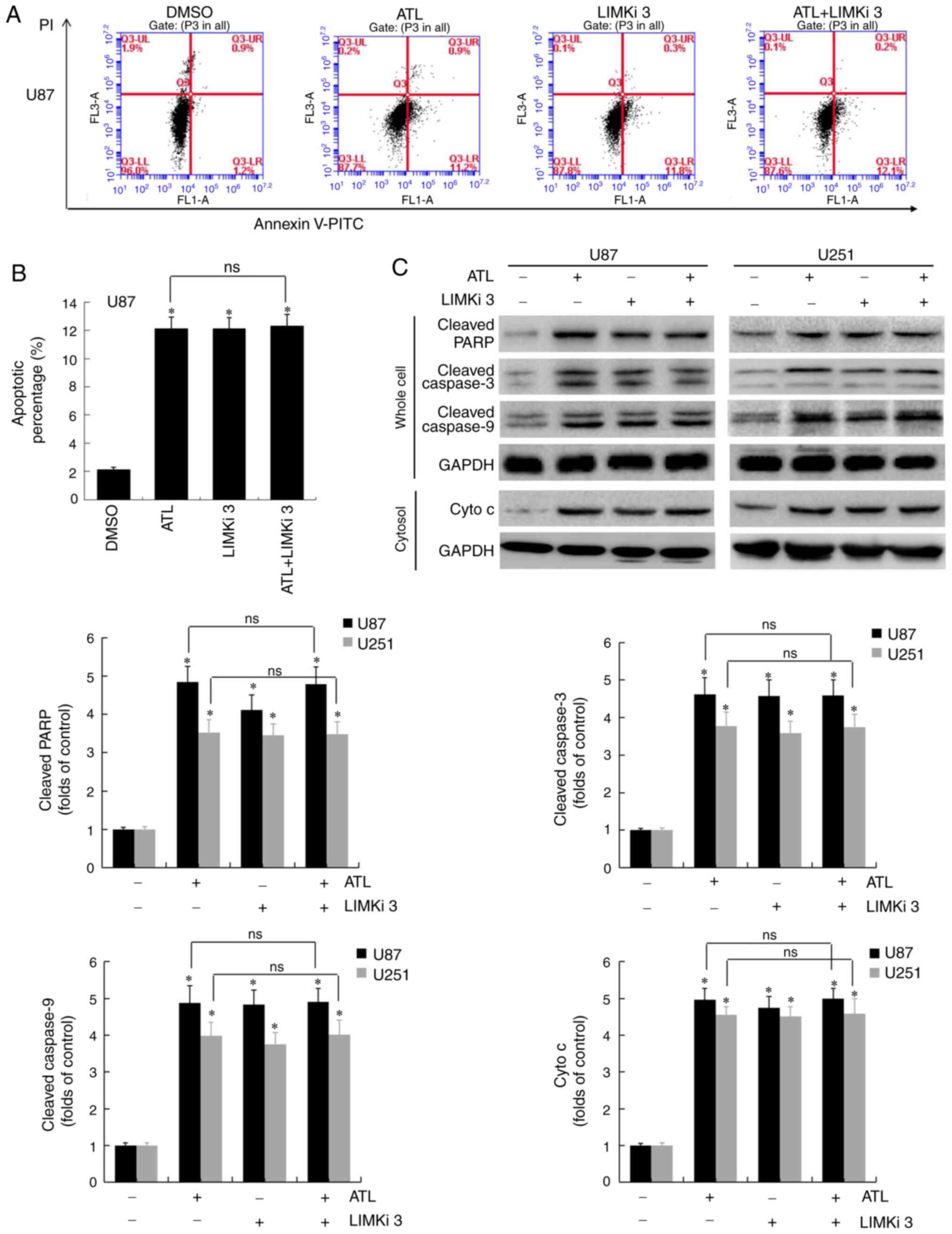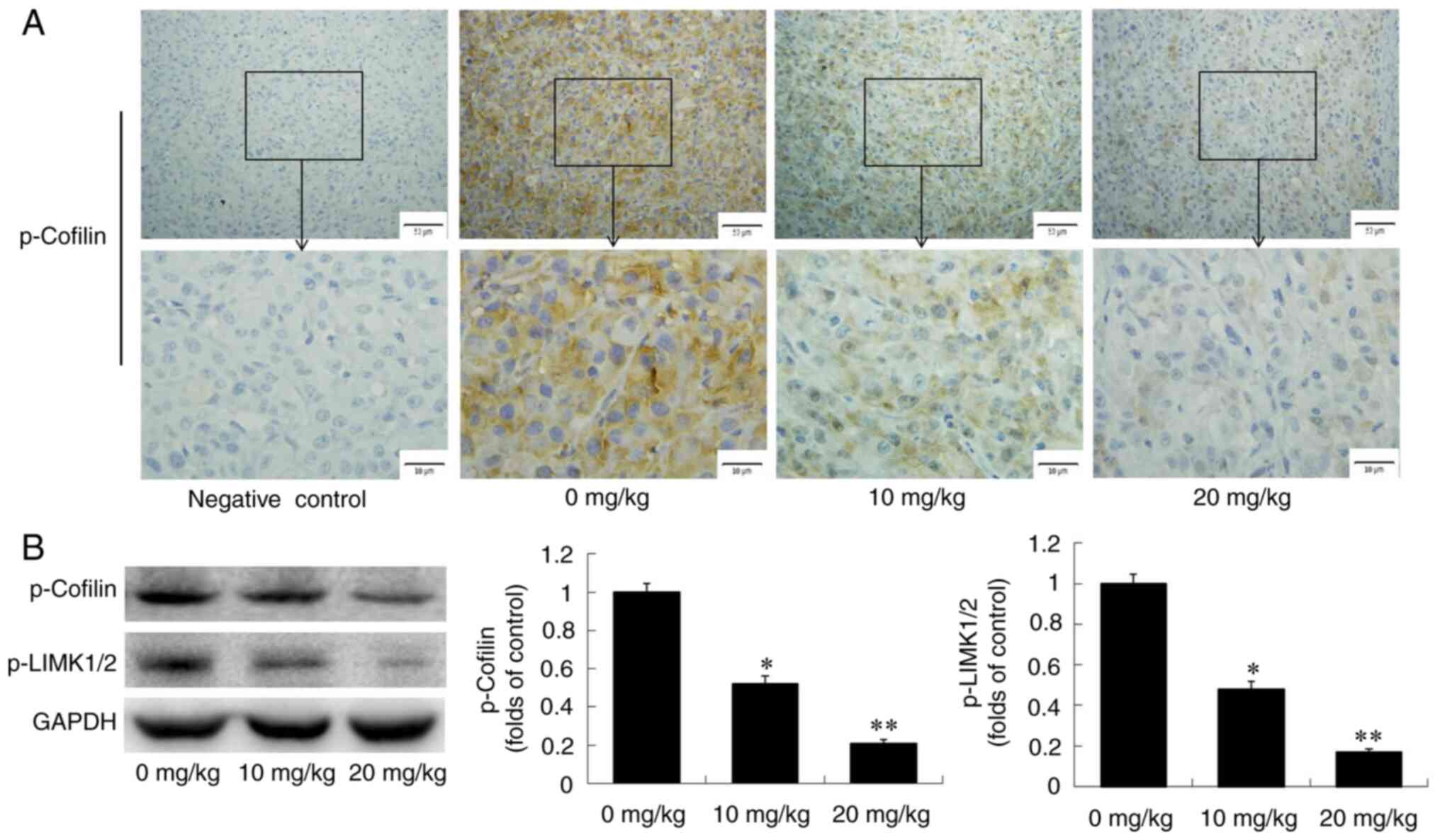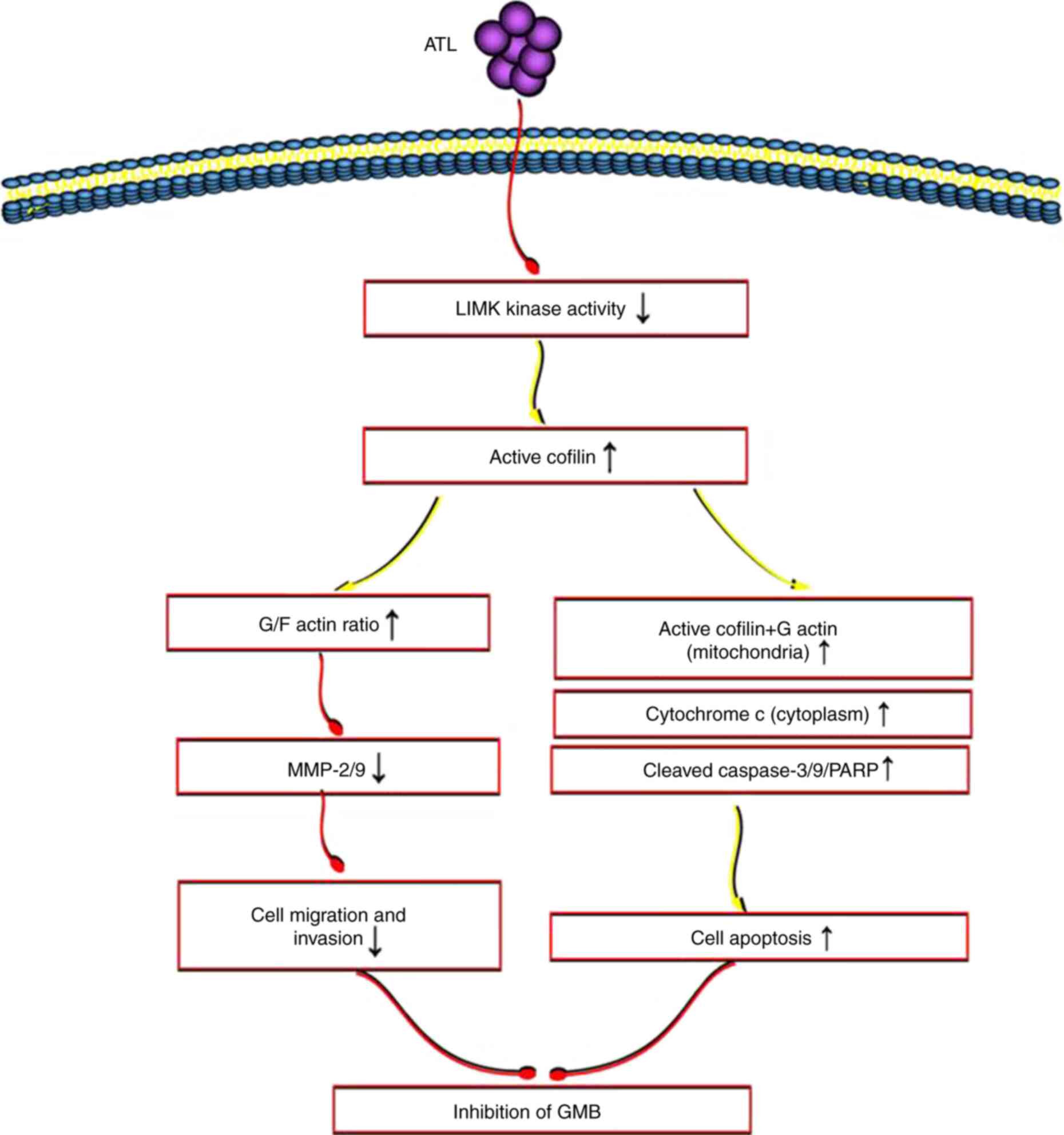|
1
|
Bryukhovetskiy I, Ponomarenko A, Lyakhova
I, Zaitsev S, Zayats Y, Korneyko M, Eliseikina M, Mischenko P,
Shevchenko V, Shanker Sharma H, et al: Personalized regulation of
glioblastoma cancer stem cells based on biomedical technologies:
From theory to experiment (Review). Int J Mol Med. 42:691–702.
2018.PubMed/NCBI
|
|
2
|
Jian S, Chen L, Minxue L, Hongmin C,
Ronghua T, Xiaoxuan F, Binbin Z and Shiwen G: Tanshinone I induces
apoptosis and protective autophagy in human glioblastoma cells via
a reactive oxygen species-dependent pathway. Int J Mol Med.
45:983–992. 2020.PubMed/NCBI
|
|
3
|
Hwang TW, Kim DH, Kim DB, Jang TW, Kim GH,
Moon M, Yoon KA, Choi DE, Park JH and Kim JJ: Synergistic
anticancer effect of acteoside and temozolomide-based glioblastoma
chemotherapy. Int J Mol Med. 43:1478–1486. 2019.PubMed/NCBI
|
|
4
|
Butowski NA, Sneed PK and Chang SM:
Diagnosis and treatment of recurrent high-grade astrocytoma. J Clin
Oncol. 24:1273–1280. 2006. View Article : Google Scholar : PubMed/NCBI
|
|
5
|
Cantrell CL, Abate L, Fronczek FR,
Franzblau SG, Quijano L and Fischer NH: Antimycobacterial
eudesmanolides from Inula helenium and Rudbeckia subtomentosa.
Planta Med. 65:351–355. 1999. View Article : Google Scholar : PubMed/NCBI
|
|
6
|
Wang X, Yu Z, Wang C, Cheng W, Tian X, Huo
X, Wang Y, Sun C, Feng L, Xing J, et al: Alantolactone, a natural
sesquiterpene lactone, has potent antitumor activity against
glioblastoma by targeting IKKβ kinase activity and interrupting
NF-κB/COX-2-mediated signaling cascades. J Exp Clin Cancer Res.
36:932017. View Article : Google Scholar
|
|
7
|
Lauffenburger D and Horwitz A: Cell
migration: A physically integrated molecular process. Cell.
84:359–369. 1996. View Article : Google Scholar : PubMed/NCBI
|
|
8
|
Mounier N and Arrigo AP: Actin
cytoskeleton and small heat shock proteins: How do they interact?
Cell Stress Chaperones. 7:167–176. 2002. View Article : Google Scholar : PubMed/NCBI
|
|
9
|
Huang T, DerMardirossian C and Bokoch G:
Cofilin phosphatases and regulation of actin dynamics. Curr Opin
Cell Biol. 18:26–31. 2006. View Article : Google Scholar
|
|
10
|
Zhang W, Gan N and Zhou J:
Immunohistochemical investigation of the correlation between LIM
kinase 1 expression and development and progression of human
ovarian carcinoma. J Int Med Res. 40:1067–1073. 2012. View Article : Google Scholar : PubMed/NCBI
|
|
11
|
Zhou Y, Su J, Shi L, Liao Q and Su Q: DADS
downregulates the Rac1-ROCK1/PAK1-LIMK1-ADF/cofilin signaling
pathway, inhibiting cell migration and invasion. Oncol Rep.
29:605–612. 2013. View Article : Google Scholar
|
|
12
|
Li R, Doherty J, Antonipillai J, Chen S,
Devlin M, Visser K, Baell J, Street I, Anderson RL and Bernard O:
LIM kinase inhibition reduces breast cancer growth and invasiveness
but systemic inhibition does not reduce metastasis in mice. Clin
Exp Metastasis. 30:483–495. 2013. View Article : Google Scholar
|
|
13
|
Aggelou H, Chadla P, Nikou S, Karteri S,
Maroulis I, Kalofonos H, Papadaki H and Bravou V: LIMK/cofilin
pathway and slingshot are implicated in human colorectal cancer
progression and chemoresistance. Virchows Arch. 472:727–737. 2018.
View Article : Google Scholar : PubMed/NCBI
|
|
14
|
Karbowski M and Youle RJ: Dynamics of
mitochondrial morphology in healthy cells and during apoptosis.
Cell Death Differ. 10:870–880. 2003. View Article : Google Scholar : PubMed/NCBI
|
|
15
|
Khan M, Yi F, Rasul A, Li T, Wang N, Gao
H, Gao R and Ma T: Alantolactone induces apoptosis in glioblastoma
cells via GSH depletion, ROS generation, and mitochondrial
dysfunction. IUBMB life. 64:783–794. 2012. View Article : Google Scholar : PubMed/NCBI
|
|
16
|
Chen H, Bernstein B and Bamburg J:
Regulating actin-filament dynamics in vivo. Trends Biochem Sci.
25:19–23. 2000. View Article : Google Scholar : PubMed/NCBI
|
|
17
|
Tsai NM, Chen YL, Lee CC, Lin PC, Cheng
YL, Chang WL, Lin SZ and Harn HJ: The natural compound
n-butylidene- phthalide derived from angelica sinensis inhibits
malignant brain tumor growth in vitro and in vivo. J Neurochem.
99:1251–1262. 2006. View Article : Google Scholar : PubMed/NCBI
|
|
18
|
Li GB, Cheng Q, Liu L, Zhou T, Shan CY, Hu
XY, Zhou J, Liu EH, Li P and Gao N: Mitochondrial translocation of
cofilin is required for allyl isothiocyanate-mediated cell death
via ROCK1/PTEN/PI3K signaling pathway. Cell Commun Signal.
11:502013. View Article : Google Scholar : PubMed/NCBI
|
|
19
|
Van Troys M, Huyck L, Leyman S, Dhaese S,
Vandekerkhove J and Ampe C: Ins and outs of ADF/cofilin activity
and regulation. Eur J Cell Biol. 87:649–667. 2008. View Article : Google Scholar : PubMed/NCBI
|
|
20
|
Bernstein BW and Bamburg JR: ADF/cofilin:
A functional node in cell biology. Trends Cell Biol. 20:187–195.
2010. View Article : Google Scholar : PubMed/NCBI
|
|
21
|
Lei JC, Yu JQ, Yin Y, Liu YW and Zou GL:
Alantolactone induces activation of apoptosis in human hepatoma
cell. Food Chem Toxicol. 50:3313–3319. 2012. View Article : Google Scholar : PubMed/NCBI
|
|
22
|
Mi XG, Song ZB, Wu P, Zhang YW, Sun LG,
Bao YL, Zhang Y, Zheng LH, Sun Y, Yu CL, et al: Alantolactone
induces cell apoptosis partially through down-regulation of
testes-specific protease 50 expression. Toxicol Lett. 224:349–355.
2014. View Article : Google Scholar
|
|
23
|
Shi Y, Bao YL, Wu Y, Yu CL, Huang YX, Sun
Y, Zheng LH and Li YX: Alantolactone inhibits cell proliferation by
interrupting the interaction between Cripto-1 and activin receptor
type II A in activin signaling pathway. J Biomol Screen.
16:525–535. 2011. View Article : Google Scholar : PubMed/NCBI
|
|
24
|
Ridley AJ, Schwartz MA, Burridge K, Firtel
RA, Ginsberg MH, Borisy G, Parsons JT and Horwitz AR: Cell
migration: Integrating signals from front to back. Science.
302:1704–1709. 2003. View Article : Google Scholar : PubMed/NCBI
|
|
25
|
Campellone KG and Welch MD: A nucleator
arms race: Cellular control of actin assembly. Nat Rev Mol Cell
Biol. 11:237–251. 2010. View Article : Google Scholar : PubMed/NCBI
|
|
26
|
Hitchcock-Degregori SE: Chemotaxis:
Cofilin in the driver's seat. Curr Biol. 16:R1030–R1032. 2006.
View Article : Google Scholar : PubMed/NCBI
|
|
27
|
Lee MH, Kundu JK, Chae JI and Shim JH:
Targeting ROCK/LIMK/cofilin signaling pathway in cancer. Arch Pharm
Res. 42:481–491. 2019. View Article : Google Scholar : PubMed/NCBI
|
|
28
|
Berger K and Moeller MJ: Cofilin-1 in the
podocyte: A molecular switch for actin dynamics. Int Urol Nephrol.
43:273–275. 2011. View Article : Google Scholar : PubMed/NCBI
|
|
29
|
Wang W, Mouneimne G, Sidani M, Wyckoff J,
Chen X, Makris A, Goswami S, Bresnick AR and Condeelis JS: The
activity status of cofilin is directly related to invasion,
intravasation, and metastasis of mammary tumors. J Cell Biol.
173:395–404. 2006. View Article : Google Scholar : PubMed/NCBI
|
|
30
|
Pandey D, Goyal P and Siess W:
Lysophosphatidic acid stimulation of platelets rapidly induces
Ca2+-dependent dephosphorylation of cofilin that is
independent of dense granule secretion and aggregation. Blood Cells
Mol Dis. 38:269–279. 2007. View Article : Google Scholar : PubMed/NCBI
|
|
31
|
Yang C, Yang J, Sun M, Yan J, Meng X and
Ma T: Alantolactone inhibits growth of K562/adriamycin cells by
downregulating Bcr/Abl and P-glycoprotein expression. IUBMB Life.
65:435–444. 2013. View Article : Google Scholar : PubMed/NCBI
|
|
32
|
Lei JC, Yu JQ, Yin Y, Liu YW and Zou GL:
Alantolactone induces activation of apoptosis in human hepatoma
cells. Food Chem Toxicol. 50:3313–3319. 2012. View Article : Google Scholar : PubMed/NCBI
|
|
33
|
Ding Y, Wang H, Niu J, Luo M, Gou Y, Miao
L, Zou Z and Cheng Y: Induction of ROS overload by alantolactone
prompts oxidative DNA damage and apoptosis in colorectal cancer
cells. Int J Mol Sci. 17:5582016. View Article : Google Scholar : PubMed/NCBI
|
|
34
|
Pal HC, Sehar I, Bhushan S, Gupta BD and
Saxena AK: Activation of caspases and poly (ADP-ribose) polymerase
cleavage to induce apoptosis in leukemia HL-60 cells by Inula
racemosa. Toxicol In Vitro. 24:1599–1609. 2010. View Article : Google Scholar : PubMed/NCBI
|
|
35
|
Dalla Via L, García-Argáez A,
Martínez-Vázquez M, Grancara S, Martinis P and Toninello A:
Mitochondrial permeability transition as target of anticancer
drugs. Curr Pharm Des. 20:223–244. 2014. View Article : Google Scholar
|
|
36
|
Kanellos G and Frame MC: Cellular
functions of the ADF/cofilin family at a glance. J Cell Sci.
129:3211–3218. 2016. View Article : Google Scholar : PubMed/NCBI
|
|
37
|
Chua BT, Volbracht C, Tan KO, Li R, Yu VC
and Li P: Mitochondrial translocation of cofilin is an early step
in apoptosis induction. Nat Cell Biol. 5:1083–1089. 2003.
View Article : Google Scholar : PubMed/NCBI
|
|
38
|
Rehklau K, Gurniak CB, Conrad M, Friauf E,
Ott M and Rust MB: ADF/cofilin proteins translocate to mitochondria
during apoptosis but are not generally required for cell death
signaling. Cell Death Differ. 19:958–967. 2012. View Article : Google Scholar :
|















